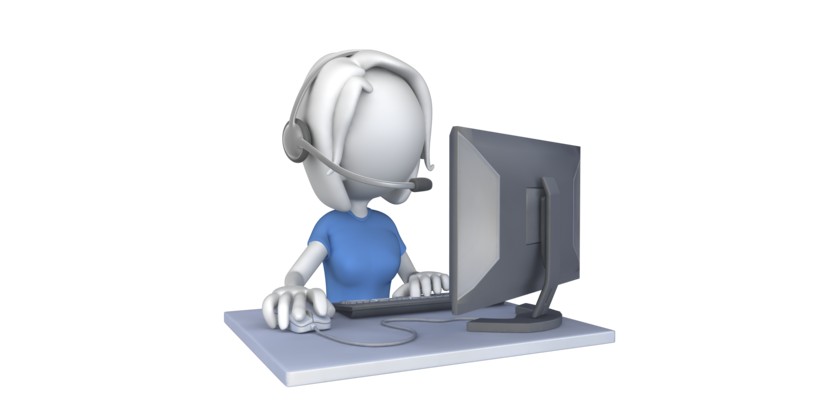Optimize Call Center Automation For Customer Service

Call center automation is one of the fastest ways to increase call center efficiency and cut call center costs. New technologies in areas like voice recognition is making call center automation work better and less intrusive to your customers. For customers call center automation reduces the hassle involved in calling in for help and makes for a more pleasant experience. For businesses, call center cuts costs and enables your call center to handle a larger volume of calls.
However, call center automation isn't an unmitigated win. Customer attitude toward call center automation is anywhere from mild annoyance to refusal to deal with a phone robot. If the call center system isn't set up properly, it can add greatly to the customer's negative reaction and lead to “call center Hell.” It's important that an automated call center be carefully designed to produce the least amount of effort for customers using the call center.
Customers calling in to call centers want answers to their questions as fast and simply as possible, with the minimum of waits and repetition of information. Getting this kind of performance from a call center requires careful design and constant monitoring to keep it running at optimum efficiency.
For example, typically customers have to be verified to ensure the caller is actually responsible for the equipment he or she is calling about. This is a legal requirement that has to be fulfilled before the customer can be helped. In a non-automated call center this can involve asking the customer a time-consuming series of questions and spending anywhere from two to five minutes authenticating the customer.
Two to five minutes doesn't sound like much, but it can represent a significant slowdown in the tempo of customer service calls, making the call center less efficient. Worse, it can fray the customer's nerves as they just want to get his or her problem solved.
One way around this is to use caller ID combined with an integrated voice response (IVR) system. The caller ID provides information on the caller's identity by checking the phone number against the company's customer database and the IVR system asks one or two remaining questions to confirm identity. The process takes seconds instead of minutes.
One thing that makes this sort of interaction possible is the enormously enhanced ability of modern systems to recognize speech and respond to it correctly. There has been steady, continuous improvement in these capabilities since call centers starting implementing voice recognition technology 20 years or more ago. Today automated agents can deal with a wide range of accents and speech pattern instead of requiring the customer to speak unnaturally slowly and deliberately. As a result, conversations with automated agents have become more natural and more comfortable for customers.
Voice capabilities are only part of modern call center automation. Another important part is the ability to route calls to the right agent automatically. This requires matching the caller's problem with the agent's experience. By maintaining a database of the agents' expertise and routing the caller with the use of the database, such a system avoids long waits and transferring customers from one agent to another – a major source of customer irritation.
Each of these functions may not seem like much in isolation, but taken together they can save significant amounts of time for the customer, and significant resources for the company. Since surveys have shown that 80 percent of the cost of a call center is represented by human agents time, this can represent a major savings.
In designing a call center workflow it is important to put the customer at the center of the operation. Moving the customer quickly and efficiently through the operation while satisfying the customer is the main goal of an automated call center. Doing so saves the company money and results in more satisfied customers.
About the Author
 Rick Cook has been involved with computers since the days of punched cards and magnetic drum memories. He has written hundreds of articles on computers and related technology as well as a series of fantasy novels full of bad computer jokes.
Rick Cook has been involved with computers since the days of punched cards and magnetic drum memories. He has written hundreds of articles on computers and related technology as well as a series of fantasy novels full of bad computer jokes.(visit http://voip.com.vn to get more information )



Leave a Reply Cancel Reply